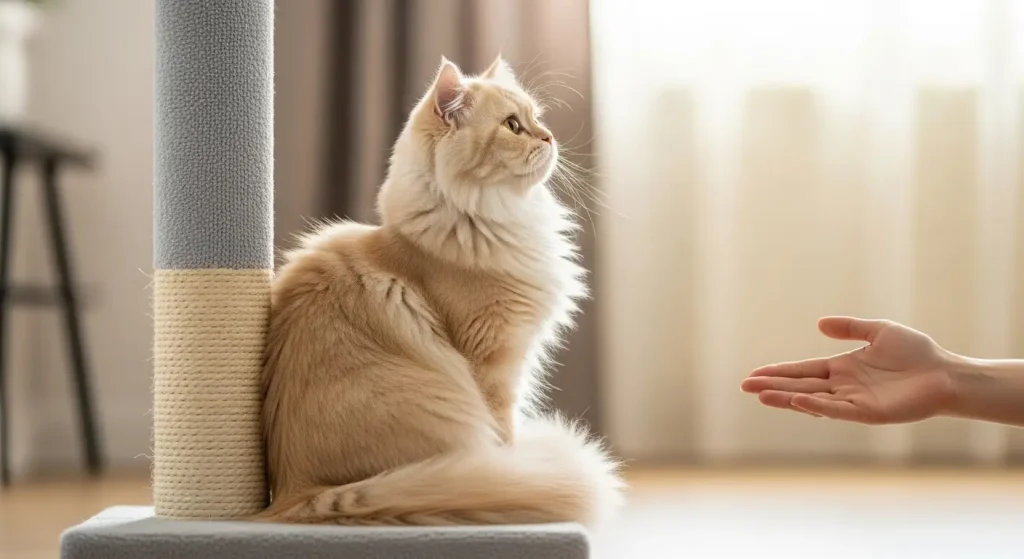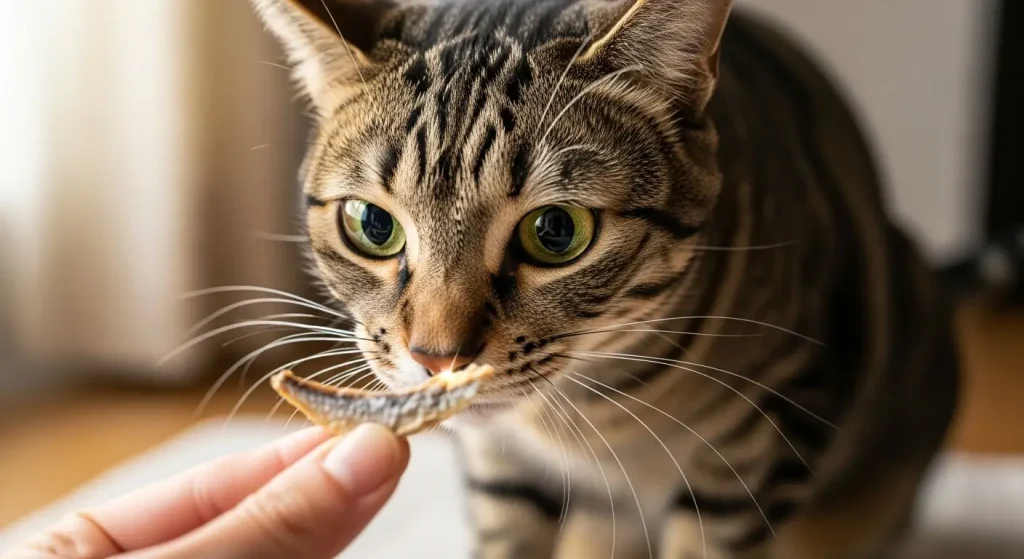People always ask me if you can train a cat like a dog. I usually smile and say, “No, and thank goodness for that.” It’s about learning to speak their language, I think. A strange language, really, made up of patience and clever trades. You have to somehow convince a cat that your idea was their brilliant idea from the very beginning.
A gentleman named Mark was in the clinic with his new kitten just the other day—a little orange storm he called Cheeto. He told me he’d owned dogs his whole life, so this was all new to him. As we were finishing up, he just asked me, completely sincere, “So, when do I sign him up for obedience school?”
I think I managed not to smile, but it was close. His question came from such a good, caring place, but it was like asking how to saddle a fish. You can’t. You have to learn to swim instead. And to really swim with a cat, you have to let go of everything you think you know about training and start from a place of respect for their ancient, unbothered soul.
The Case of the Unimpressed Persian
I remember a client years ago, a woman with a magnificent, fluffy white Persian named Duchess. Duchess had taken to scratching a beautiful antique chair, and her owner was at her wit’s end. “I tell her ‘No!’ in a firm voice,” she explained, exasperated. “I praise her and give her a cuddle when she uses the scratching post, but she just looks at me like I’m a crazy person.”
And in Duchess’s world, she was. What this lovely owner hadn’t yet grasped is that cats lack the “eager-to-please” gene that we bred so carefully into dogs. A dog finds deep satisfaction in praise; a cat finds satisfaction in things that are, well, satisfying to them. Duchess didn’t care if her owner was happy. She cared that the antique chair had a wonderfully textured fabric and scratching it felt good. We ended up wrapping the scratching post in a similar textured fabric and rubbing it with catnip. Suddenly, using the post was a better deal. It worked. The chair was saved. It wasn’t about obedience; it was just a better offer, plain and simple.

Finding Pixel’s Price
The key to any smart business deal is finding the right currency. Every cat has a price, and it’s rarely a pat on the head. I learned this most clearly from a tech-savvy client and his incredibly clever tabby, Pixel. The owner wanted to teach Pixel to come when called. He tried everything. He’d call “Pixel, come!” and offer a piece of her regular kibble. Pixel would look up from a nap, and you’d just get this slow blink. It was a look that said, “You must be joking,” right before she went back to sleep.
He was about to give up when we talked about the concept of “high-value” treats. It’s not a snack; it’s a jackpot. For Pixel, after much experimentation, that jackpot was a tiny flake of freeze-dried salmon. The moment he swapped the boring kibble for the salmon, it was like a switch flipped in Pixel’s brain. The call “Pixel, come!” no longer meant “Your tall, loud servant wants something.” It meant “There is a 100% chance of delicious salmon appearing right now.” Suddenly, coming when called was the best idea Pixel had ever heard. The training wasn’t about the command; it was about the currency.

Cheeto’s Two-Minute High-Five
When Mark and Cheeto came in a few weeks later, we talked about it again. We landed on the idea that maybe hour-long sessions were the problem. A cat’s interest is a flickering flame, not a steady furnace. “Try for two minutes,” I suggested. “Just two minutes. And end it while he’s still having fun.”
He called me a week later, laughing. He’d been trying to teach Cheeto to give a high-five. His first attempt was a ten-minute disaster that ended with Cheeto batting at his hand and then stalking off in a huff. The next day, he tried my approach. He told me that the next day, when Cheeto was all relaxed, he got the good treats out. The whole thing barely lasted a minute, and he’d already gotten two little taps on the hand. Then he stopped. Cheeto looked at him, confused, wanting more. The next session was two minutes. By the end of the week, Cheeto was bopping his hand on command, a tiny, furry genius.
Mark didn’t get the “obedient” pet he thought he was getting. He got something far more interesting: a partner in a clever game. And that’s the beautiful truth of it. You don’t train a cat to control them. You train them to connect with them, to engage their brilliant minds, and to finally understand the delightful, transactional language they were speaking all along.











